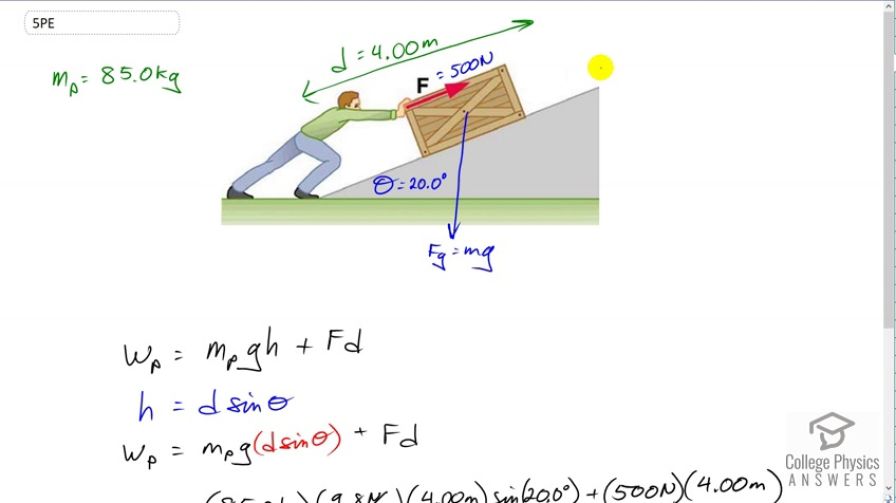Solution video
OpenStax College Physics, Chapter 7, Problem 5 (Problems & Exercises)

Calculator Screenshots
Comments
Why do we only calculate the distance the person moves in height and not along the ramp?
Hi there, thanks for the question. Since there's no friction we assume we're dealing only with conservative forces - which is to say forces (just gravity in this case) where the work done by it depends only on the start and end positions, not on the path taken to get between the start and end points. That means, when working with gravity (or with the electrostatic force ) we can use either the distance along the ramp or the height - those are just different paths to get between the start and end points. We can choose which ever is more convenient. For the sake of understanding you could try using the height change for the crate and multiply that by the crates weight. You can calculate the crate weight by noticing that the force due to the person is equal to the magnitude of the component of gravity along the ramp, in which case the weight of the crate is , which, after multiplying by the change in height of the crate works out to as shown in the video.
Hope this helps,
Shaun
why are you adding PE to the work total, PE does not equal work. I am confused.
nevermind I think i got it, Work = delta PE, there is no intial PE so therefore your left with the final which would be equal to what you have for the PE part of your work



